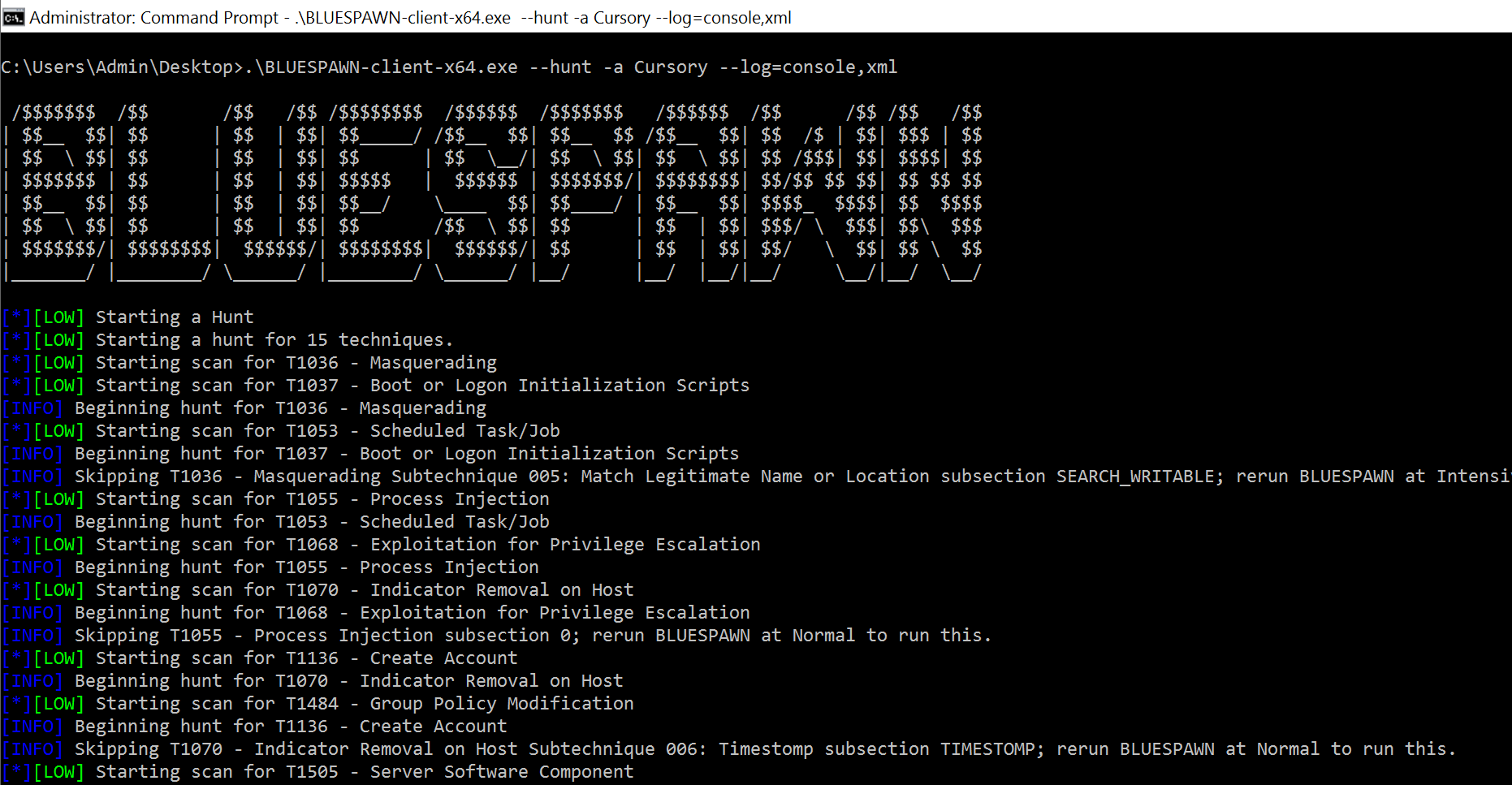Our Mission
BLUESPAWN helps blue teams monitor systems in real-time against active attackers by detecting anomalous activity
What is BLUESPAWN
BLUESPAWN is an active defense and endpoint detection and response tool which means it can be used by defenders to quickly detect, identify, and eliminate malicious activity and malware across a network.
Get Involved & Contribute to the project
Want to help make BLUESPAWN even more effective at locating and stopping malware? Join us on the BLUESPAWN Discord Server and help with development or even just suggest a feature or report a bug. No experience required - there's no better way to learn about development or security than by just jumping right in!
If you'd like to help contribute code, you can get started by checking out our wiki page on setting up your development environment. Please feel free to reach out to us in Discord if you run into any problems getting set up! We generally track bugs and new features through Issues and coordinate in chat when doing any development work.
Why we made BLUESPAWN
We've created and open-sourced this for a number of reasons which include the following:
- Move Faster: We wanted tooling specifically designed to quickly identify malicious activity on a system
- Know our Coverage: We wanted to know exactly what our tools could detect and not rely on blackbox software as much (ie AV programs). This approach will help us to better focus our efforts on specific lines of effort and have confidence in the status of others.
- Better Understanding: We wanted to better understand the Windows attack surface in order to defend it better
- More Open-Source Blue Team Software: While there are many open-source Red Team Tools out there, the vast majority of some of the best Blue Team tools are closed-source (ie, AVs, EDRs, SysInternals, etc). We shouldn't need to rely on security through obscurity to prevent malicious actors (obviously very difficult, but something to strive for!)
- Demonstrate Features of Operating System APIs: We combed through a ton of Microsoft Documentation, StackOverflow Answers, and more to create this. Hopefully others may find some of the code useful.
Coverage of MITRE ATT&CK
Visit this map to see current coverage capabilities
Try out BLUESPAWN
Note: BLUESPAWN is under active alpha development, so many features may not work as expected yet and detections may be too narrow scope or generate lots of false positives.
Note 2: BLUESPAWN is meant to be run by a security professional in most cases and as such, will detect on non-malicious activity sometimes. While BLUESPAWN helps to quickly surface potentially bad things, it expects the user to use the available information to make the final determination.
- Check out the Wiki pages to learn more about the available command line options, examples, and more.
- Download the latest release from this page
- Open an Administrative Command Prompt
- Run the following command to see the available options
.\BLUESPAWN-client-x64.exe --help
Mitigate Mode
- Run the following from your Administrative Command Prompt to audit your system for the presence of many security settings
.\BLUESPAWN-client-x64.exe --mitigate --action=audit

Hunt Mode
- Run BLUESPAWN from the Administrative Command Prompt to hunt for malicious activity on the system
.\BLUESPAWN-client-x64.exe --hunt -a Cursory --log=console,xml

Monitor Mode
- Run BLUESPAWN from the Administrative Command Prompt to monitor for malicious activity on the system
.\BLUESPAWN-client-x64.exe --monitor -a Cursory --log=console,xml

Lines of Effort
BLUESPAWN consists of 3 major modes as listed below. Several of these modules have submodules (which may not be created in the codebase yet) as listed below and all are in varying stages of planning, research, and development. Additionally, they are supported by a number of other modules.
-
Hunt (Hunts for evidence of malicious behavior)
-
Mitigate (Mitigates vulnerabilities by applying security settings)
-
Monitor (Continuously monitors the system for potentially malicious behavior)
-
Scan (Used to assess items identified by hunts and make a decision whether or not it is suspicious/malware)
-
User (Contains program main, IOBase, and other similar functions)
-
Util (Contains a collection of modules that support core operations)
- Configurations
- Event Logs
- File System
- Log
- PEs
- Processes




